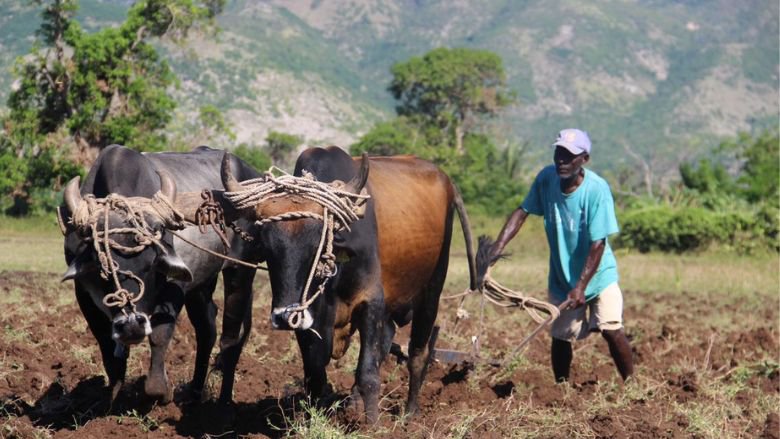Challenge
At project preparation, Haiti was the poorest country in Latin America and the Caribbean (LAC), with 27 percent of rural farmrs in extreme poverty and facing acute food security. Agriculture was their main source of income, but chronic under-investment and poor resource management degraded the productive base. Moreover, unsustainable farming, driven by land pressure, low education, and economic hardship, combined with natural disasters' shocks, severely degraded watersheds and accelarated deforestation.
Results
- 4,267 farmers (exceeding the target by 42 percent) adopted improved agricultural technology (38% women), more than 80 percent of these farmers gained better access to markets.
- 2,050 hectares are under sustainable landscape management practices, and 4 sub-watersheds have participatory plans developed.
- A spatial decision support tool for climatic risk prevention and management has been applied to 21,968 hectares covered by the project.
- 112 farmer field schools have been established across the 4 supported sub-watersheds, providing training and supporting farmers and communities in the adoption of improved agricultural practices through the provision of improved technical packages. 2,800 farmers participated in these farmer fields schools (38% women).
- 1,511 farmers (47% female), benefited from 20 matching grants that improved access to markets for local products.
- 50 water tanks with 18m3 capacity were built, benefiting 250 vulnerable households.
- In response to the 2021 earthquake, 137,611 farmers received urgent production inputs and services under the contingent emergency response component, including 20,968 farmers provided with climate-resilient crops varieties/seeds.
World Bank Group Approach
Based on previous operations, the Bank promoted an integrated approach to addressing these challenges by combining sustainable land management, climate-resilient agriculture, and disaster risk reduction. The aim, to improve natural resources, address soil erosion and water retention capacity by promoting climate-smart production and practices, was adapted to the agro-ecological context and enhanced the capacity to generate sustainable incomes. The project encouraged active community participation. Participatory and investment plans for sub-watersheds were developed. A subsidy scheme provided improved technical input packages. Through Farmer Field Schools, farmers were familiarized with improved agricultural technologies and landscape management practices with beneficiaries selected through community participation. Significant positive impacts were obtained on agriculture and rural livelihoods, while protecting communities against risks of floods and landslides due to soil erosion, water runoff and extreme weather.


